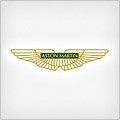
ASTON MARTIN DB7
Generations Timeline, Specs and Pictures

Aston Martin built a limited edition of the Aston Martin DB7, named DB7 GT.
It was produced in a limited number and it was different in many ways than the standard DB7.
The Aston Martin DB7 was a GT car built on the base of the older Jaguar XJS model, which was launched in 1975. But it was not a bad platform. Its handling was ahead of its time and, when fitted with the right sub-components, it was still on the game three decades later. It was that good. And the DB7 GT and the DB7 GT A were the proof. There were 190 models of the GT and 112 GTA built. The difference was that the GTA was fitted with the Aston Martin Touchtronic gearbox which was a ZF 5-speed automatic with buttons on the steering wheel to manually select the gears.
The DB7 GT featured a silver mesh grille with a special, red, logo on top of the Aston Martin badge. The hood was redesigned and gave the car a sportier look. On the side, the specific 5-spoke light-alloy wheels were fitted only on the GT model. In the back, the spoiler on the trunk lid was wider than the one fitted on the regular DB7.
Inside, the cabin was almost the same, but with nicer materials and different seats installed, which offered better side support. Black oak wood or carbon-fiber trim were offered exclusively for the GT and GTA.
The DB7 GT featured the same 6.0-liter V12 that was found on the DB7, but it was tuned to offer more power. The suspension was reinforced and a limited-slip differential was installed.

Based on the Aston Martin DB7 of the period, the DB7 Zagato is considered one of the most beautiful cars in the world.
Styled by Andrea Zagato and his team, they incorporated many styling cues from the original DB4 GT Zagato, creating an amazing, elegant and classic design that reflects Aston Martin’s heritage and traditions. The aluminium body, constructed on a shortened Aston Martin DB7 Vantage Volante wheelbase offered a 60kg weight advantage over the standard car. Just 99 examples of the Aston Martin DB7 Vantage Zagato were produced, with the aluminium bodies made in Italy and the car finished in the UK at Bloxham

The Aston Martin DB7 was the rich brother of the Jaguar XK8 and, in 1999, it received a new version named Vantage.
The British brand was famed for staring in James Bond movies. But the DB7 was not chosen for any movie with the famous British spy agent. Strangely, in the 1999 movie “The world is not enough”, James Bond drove an Aston Martin DB5. Yet, the DB7 was already launched since 1997 when “Tomorrow never dies” appeared and 007 drove the same, classic, DB5.
The Vantage was considered by many as a more powerful Jaguar XK8 instead of a true thoroughbred Aston Martin. There were many similarities between the two cars, starting with the base platform and with the styling. The curved long hood, shaped headlights, and low beltline. The coupe line was oriented more for a GT vehicle than for a race-oriented one.
Inside the vehicle, there were four seats even though the rear ones were big enough to accommodate a tiny toddler. But the front seats were far more important, and those offered enough comfort for long cruises. The Aston Martin Vantage was a true Gran Tourer with a powerful engine. Its amenities were exclusive and the mix between wood and leather was typical for a British engineered car.
The standard vehicle came with a 6-speed manual transmission, but an option for a 5-speed automatic was available. The manual version was considerably faster but, for a more relaxed drive, the automatic was chosen more often.

The Aston Martin DB7 Coupe debuted as a prototype at the 1992 Geneva Motor Show and was available for the large public starting 1993.
Developed by Tom Walkinshaw Racing (TWR), the DB7 Coupe was reportedly sharing its platform with the Jaguar XJS and was fitted with a 3.2L 6-cylinder inline engine - which Aston Martin supercharged to a maximum 435 hp. This way, the new DB7 Coupe would reach 0-60 mph in 5.8 seconds and top speed around 160 mph. Thanks to its stylish exterior look and powerful engines, the DB7 Coupe was considered the most successful Aston Martin model ever produced, with sales exceeding 7,000 units for both generation models.























































